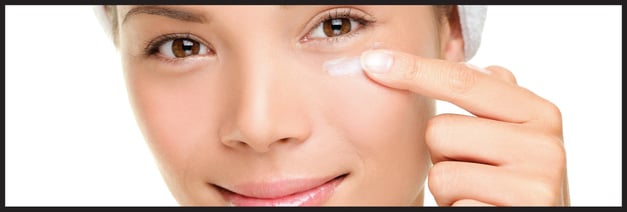 For decades, beauty brands have been promising that their creams, lotions, and potions will work miracles, virtually erasing crow’s feet and lifting sagging skin. But women are no longer buying it. Once a leader in the category, anti-aging skincare is now the weakest performing segment. A recent survey found that 24% of women frequently don’t get the results they want from skin care products and almost a third reported that they have several bottles of partially used products taking up space on their make-up tables.
For decades, beauty brands have been promising that their creams, lotions, and potions will work miracles, virtually erasing crow’s feet and lifting sagging skin. But women are no longer buying it. Once a leader in the category, anti-aging skincare is now the weakest performing segment. A recent survey found that 24% of women frequently don’t get the results they want from skin care products and almost a third reported that they have several bottles of partially used products taking up space on their make-up tables.
So, what do women want from their skincare products? “There’s an overall market shift taking place in skincare, “ says Andrea Van Dam, CEO of Women’s Marketing. “Women are doing their research. Widespread use of the internet and social media has resulted in women becoming more informed and knowledgeable shoppers. They’re concerned about ingredient safety, increasingly aware of the latest world-wide beauty trends, and are paralyzed by too many choices. They want natural products, prestige trends at mass market prices, and more effective tools to help them navigate the skincare aisle,” she advises.
Demand for Natural Skin Care Increases
Research shows that 59% of women read beauty product labels to identify harmful ingredients prior to purchase. Sulfates, parabens, and synthetic fragrances top the list of chemicals women want to avoid. “Nearly one-in-four women say it’s very important their skin care purchases are all-natural, this is even more pronounced with women in the 18-34 demographic. Researchers found 63% of Millennial women believe it’s ‘very important’ to buy natural skincare products and they actively seek them out,” Van Dam says. “Right now a key group is dissatisfied with the range of natural options—17% of department store customers, 14% of specialty drug and grocery shoppers, and 13% of mass market drug consumers are unsatisfied with the volume of green beauty products offered,” Van Dam continues.
“There’s a growing and sustainable lifestyle movement in health and wellness that is affecting all verticals. Beauty is such an important category for women that it’s no surprise the impact of the trend will be tremendous. This presents an unprecedented opportunity for both brands and retailers to position themselves as leaders by responding to consumer demand,” explains Van Dam.
Prestige Skin Care Marketing Trends Migrating to Mass Market
Social media and the internet have given women access to global beauty trends. “YouTube influencers are giving women the same access to the latest innovations in make-up and skincare and driving demand in the U.S.,” Van Dam says. “The Asian beauty trend is just one example. Interest in Asian-inspired skincare trends such as cushion compacts and single-use sheet masques could boost category spending,” she said. “While high penetration items, like face wash and lip balm, have historically done very well at mass market, consumers have been turning to prestige brands for specialty skincare purchases,” Van Dam explains.
The fact that shoppers are relying on higher-priced brands for specialty facial skincare items poses both a challenge and an opportunity for retailers. “Specialty skincare users are generally the most engaged in the category. Mass market brands that offer the same benefits as luxury products will be better perceived by the consumer and more likely to get her attention,” Van Dam advises.
Shopping for Skin Care: Better Tools to Navigate the Category
A recurring theme in the facial skincare category and, even across the broader personal care category, is the need for tools to help shoppers navigate. “Women are overwhelmed with choices. They are exposed to more than 5,000 brand messages every day. Breaking through the clutter and sending the right message at the moment of interest is the only way that emerging and ambitious established brands will be able to succeed in this crowded category,” Van Dam warns. “From a retailer perspective, brands may want to consider shelving products by benefit and highlighting top performers within each skincare segment to more easily direct shoppers to what they need,” she suggests.
“Overall, all these factors have contributed to changing category dynamics,” says Van Dam, “Looking forward, the category may need to further segment to reflect the needs, and wants, of skincare consumers.”
Sources: Facial Skincare and Anti-Aging US, May 2015; Green Beauty Barometer 2015



COMMENTS